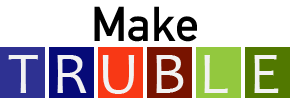|
This is a completed Faculty Mentoring Network (FMN). FMNs are sustained, immersive, community-based professional development opportunities for faculty. FMNs support the adaptation and implementation of materials and/or instructional approaches in their classrooms. Learn more about FMNs. Interested in upcoming FMN opportunities? Sign up for the QUBES Newsletter |
Goals
- Develop, implement, and share modules for teaching statistical and biological concepts in R with Swirl, an interactive platform for learning and teaching R in the RStudio console
- Contribute one new lesson and leave the FMN with more ready-to-use Swirl lessons covering diverse biology and data analysis concepts
Mentors
- Suann Yang, State University of New York College at Geneseo
Final Products
Setting Up Nonparametric Tests
Version: 1.0
This swirl lesson will show you how to rearrange your data within R from one that shows a multiple factor design (2 x 2) to a single factor (4 levels) to allow for data analyses that require non-parametric statistics.
Students will learn how to set up a population matrix model in R and use it for demographic analysis of a population, including projecting population growth, determining lambda and the stable age distribution, and conducting an elasticity analysis.
Hardy-Weinberg Equilibrium: a swirl resource
Version: 1.0
Students will use swirl to understand Hardy-Weinberg equilibrium. The lesson starts with observed numbers of individuals for each genotype, and students will work through a number of steps to assess whether or not the population is in equilibrium.
Analyzing Nutrient Simulation Experiments with a one-way ANOVA
Version: 1.0 Adapted From: Conducting Analysis of Variance (ANOVA) in R with swirl v1.0
We discuss what tests are appropriate to analyze the data from nutrient simulation experiments. They will conduct one-way ANOVAs and a post hoc test using a dummy dataset and interpret the results.
Cleaning Data with R and the Tidyverse in Swirl
Version: 1.0
The overall goal is to help students learn common data cleaning procedures on a dataset once they’ve collected measurements and before they are able to start their analysis. This swirl lesson is designed specifically to deal with missing data.
By the end of this lesson, students should be able to load FASTA files into R as DNAStringSets and use width() and alphabetFrequency(), combined with other functions like sum() and mean(), to evaluate genome assembly quality and nucleotide frequencies.

